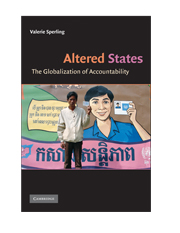Book contents
- Frontmatter
- Contents
- Acknowledgments
- 1 Transnational Institutions and Accountability
- 2 For Richer, for Poorer: Economic Globalization
- 3 Democracy from Abroad? Political Globalization
- 4 Army for Hire: Transnational Military Forces
- 5 Trials and Tribulations: Transnational Judicial Institutions
- 6 My Country Is the Whole World: Transnational Civil Society
- 7 Conclusion: Altered States and Altered Citizens
- Bibliography
- Index
6 - My Country Is the Whole World: Transnational Civil Society
Published online by Cambridge University Press: 19 January 2010
- Frontmatter
- Contents
- Acknowledgments
- 1 Transnational Institutions and Accountability
- 2 For Richer, for Poorer: Economic Globalization
- 3 Democracy from Abroad? Political Globalization
- 4 Army for Hire: Transnational Military Forces
- 5 Trials and Tribulations: Transnational Judicial Institutions
- 6 My Country Is the Whole World: Transnational Civil Society
- 7 Conclusion: Altered States and Altered Citizens
- Bibliography
- Index
Summary
“For,” the outsider will say, “in fact, as a woman I have no country. As a woman I want no country. As a woman my country is the whole world.”
– Virginia WoolfVirginia Woolf penned her proclamation in the mid-1930s, at a time when letters constituted the main means of interpersonal communication across long distances. Since that time, technology has sped the flow of information and made inter-state travel far easier, with dramatic effects on politics, economics, and civic activism. As multinational corporations (offering everything from manufactured goods to military services) and institutions of global governance expand their reach, so too have civic activists been globalizing their activities. As global “distances” diminish, the obstacles to human connection and cooperation are reduced, enabling transnational social movements to flourish.
Although border-crossing social movements constitute a long-standing feature of the political landscape, transnational organizing is expanding. A study of transnational social movement organizations found 183 such groups in 1973 and 959 in 2000. These groups whittle away at state sovereignty – a rhetorical mask often shrouding oppression within a country's borders – and embrace the potential for a worldwide “country” where human rights would be protected and human needs would be met. Civil society, traditionally understood as a set of intermediary organizations designed to check state power and hold state leaders accountable, has taken on an increasingly global purview and scale.
- Type
- Chapter
- Information
- Altered StatesThe Globalization of Accountability, pp. 277 - 318Publisher: Cambridge University PressPrint publication year: 2009



